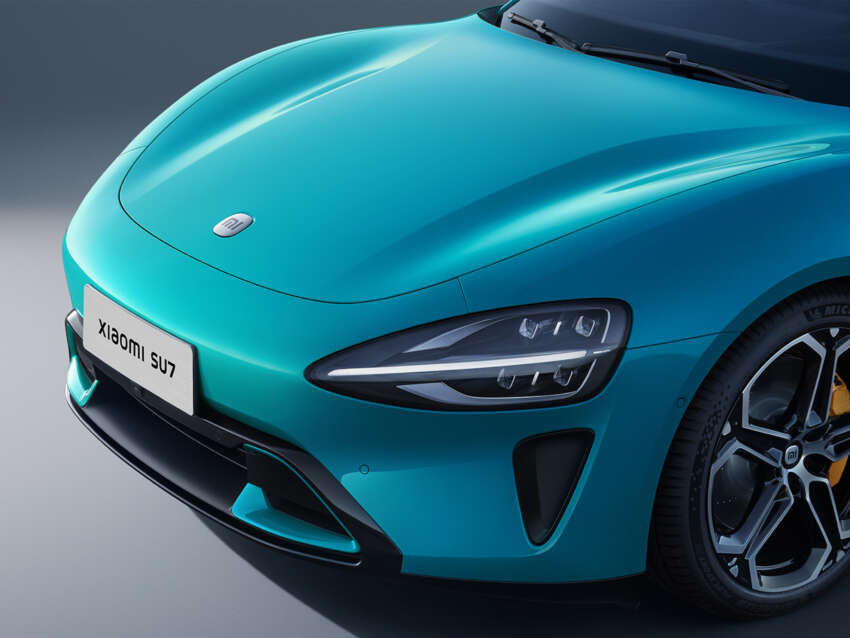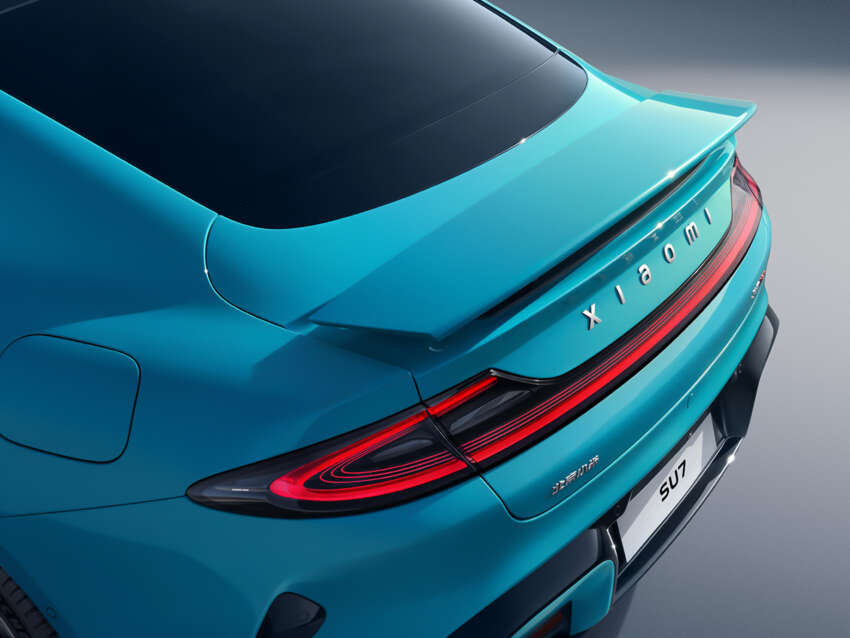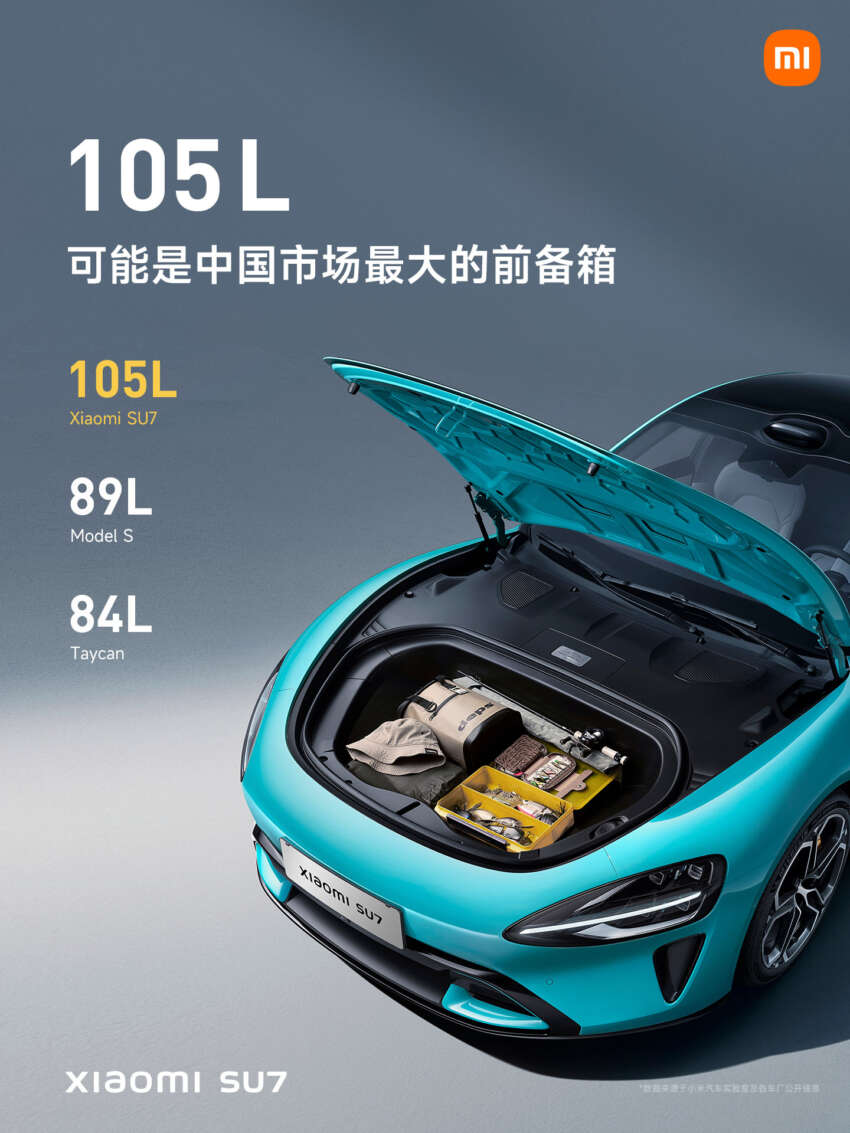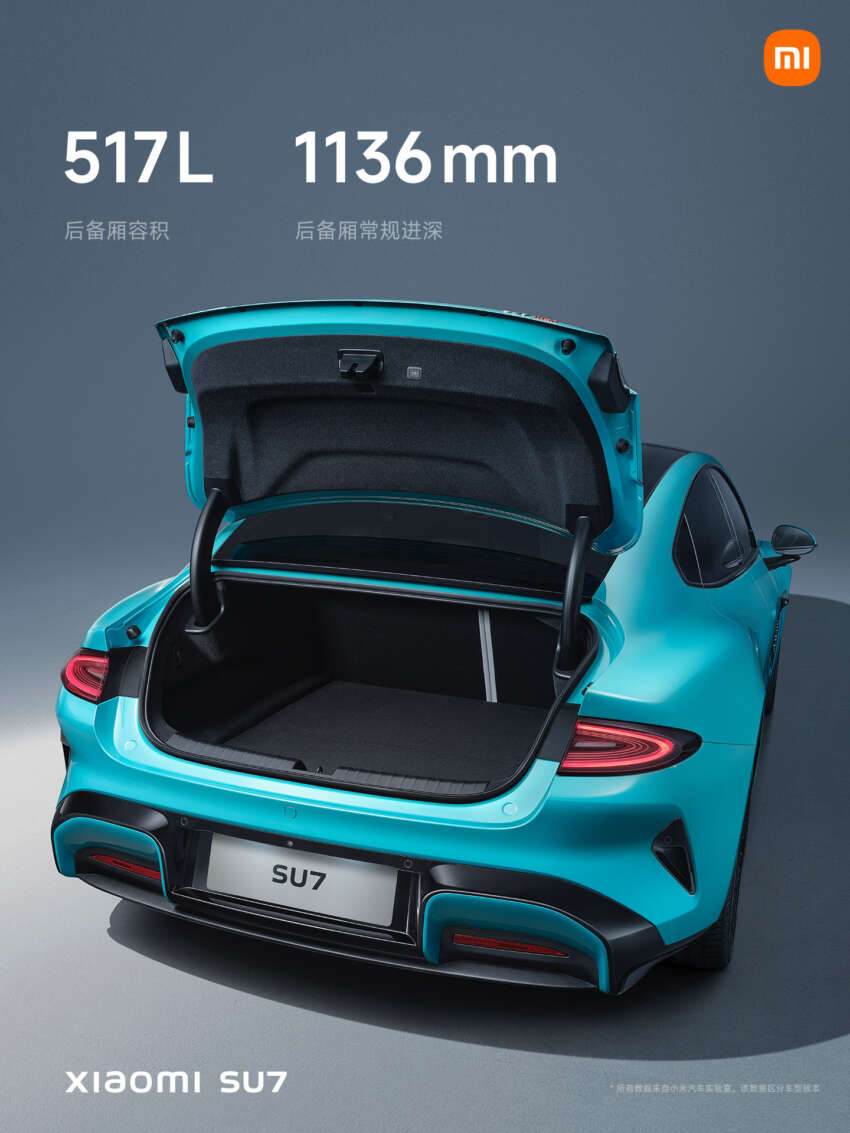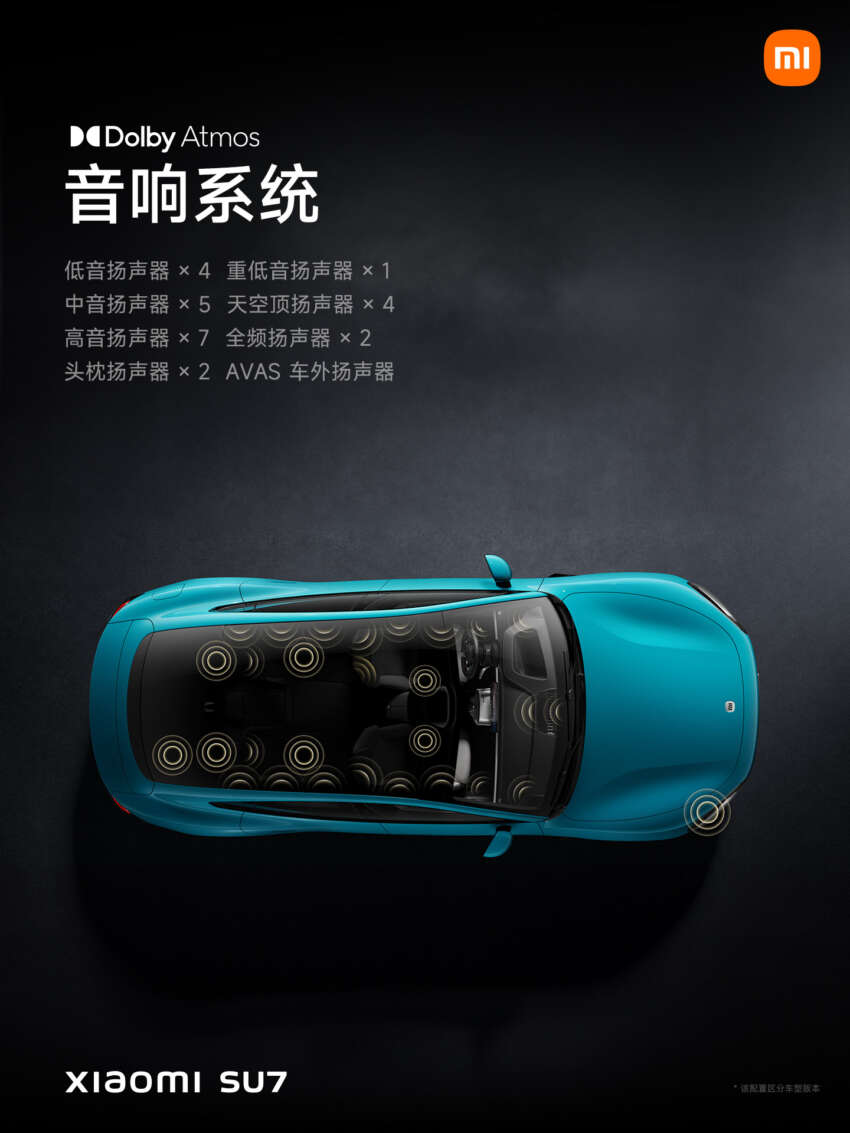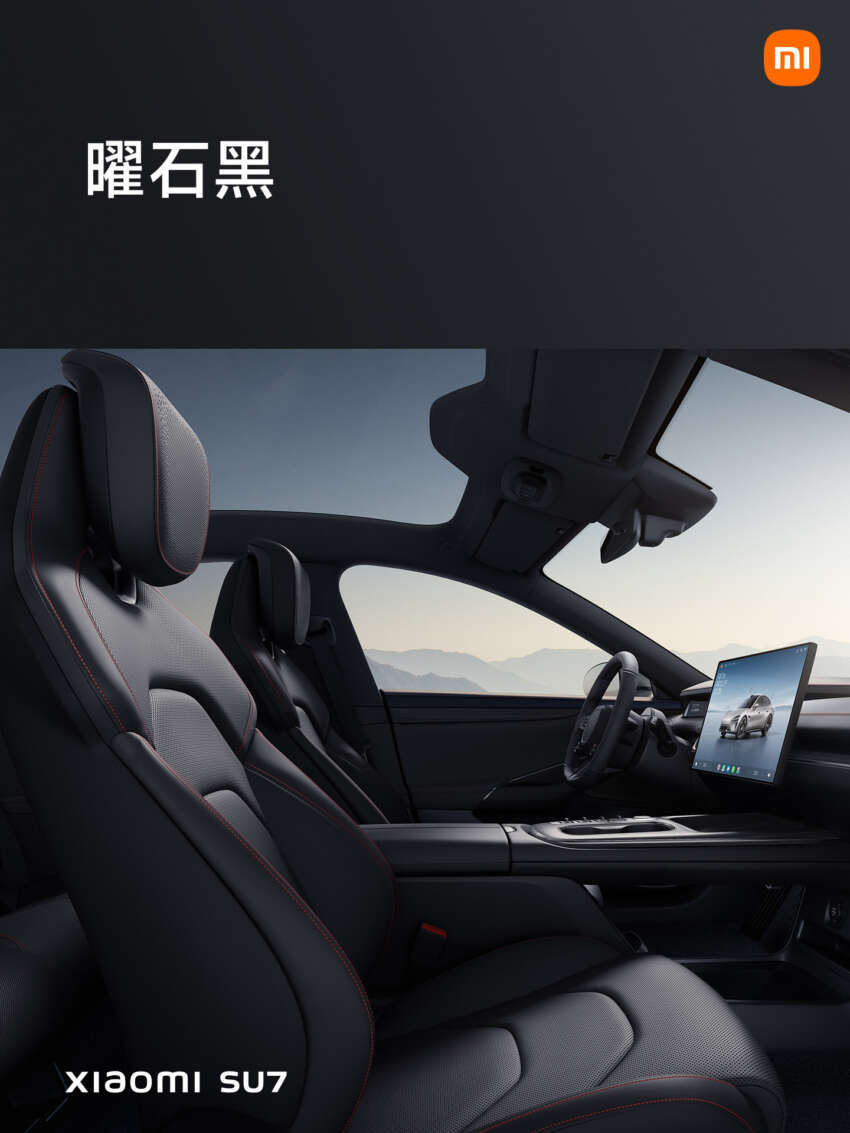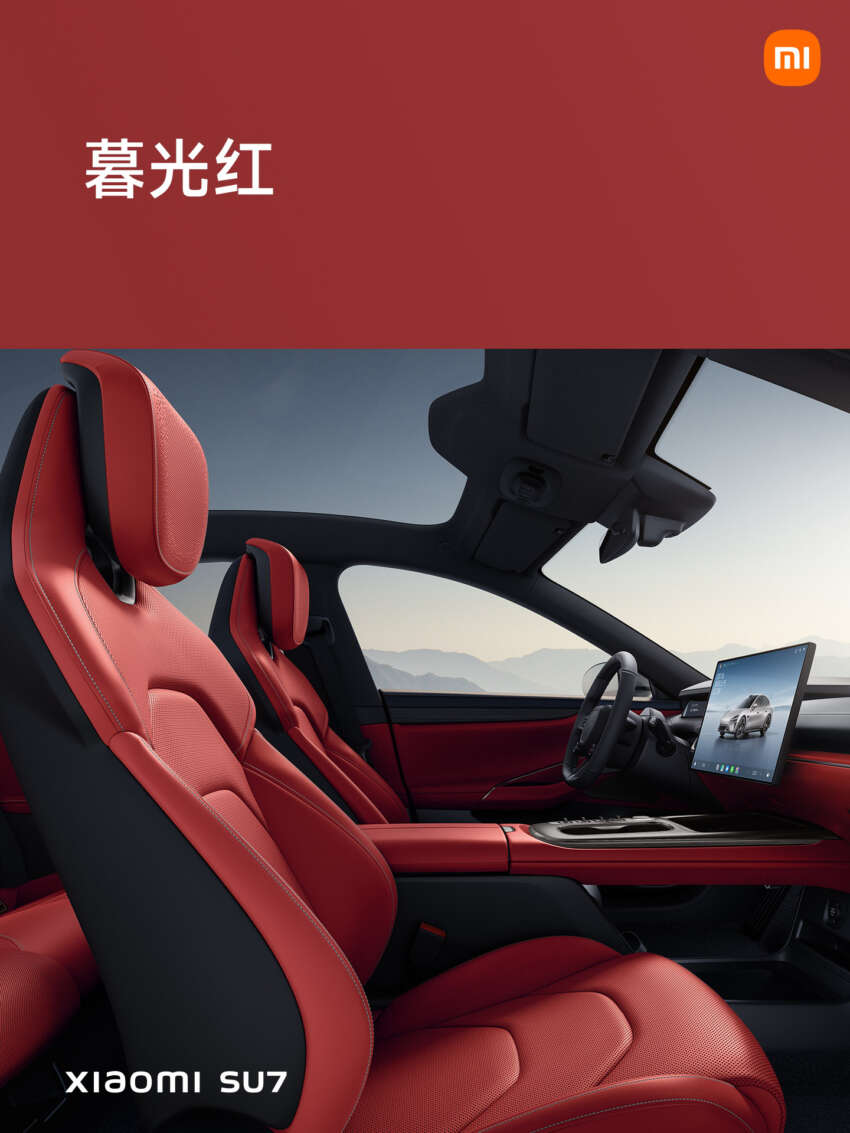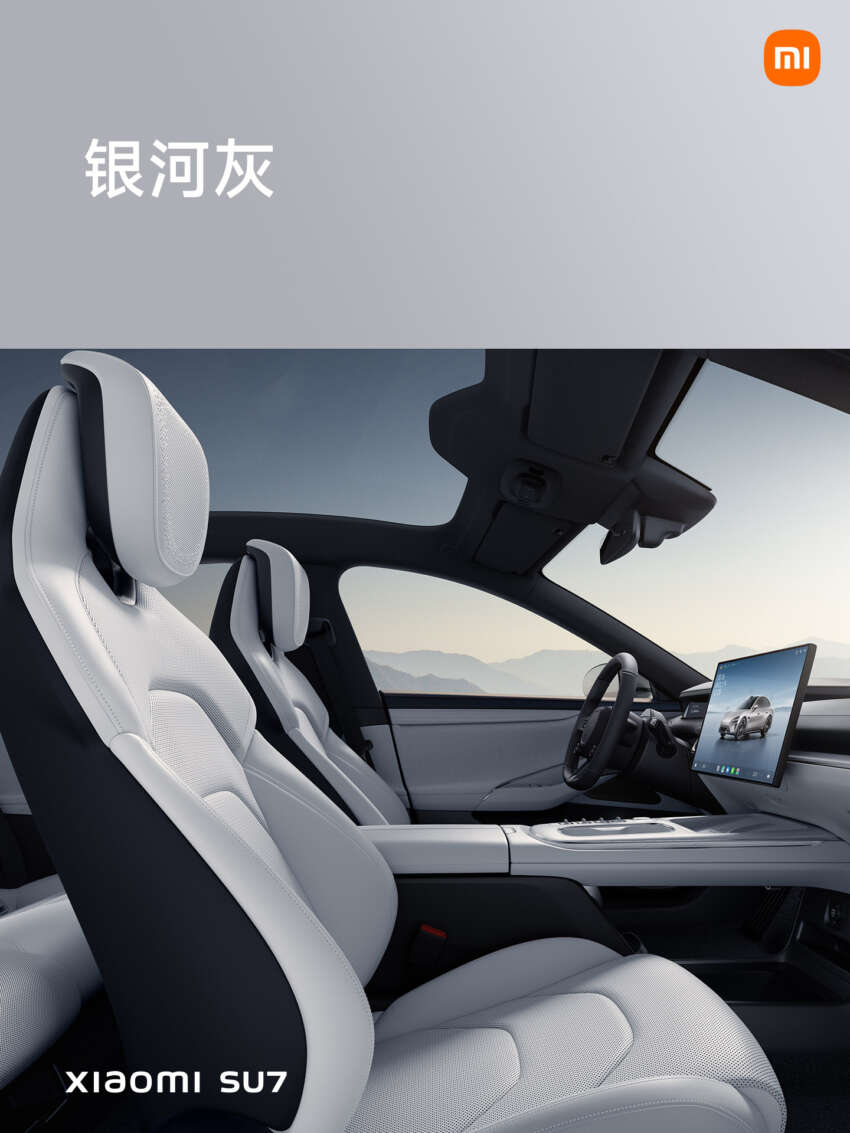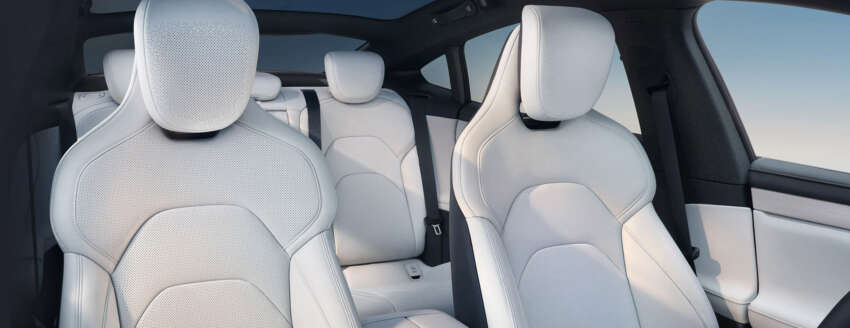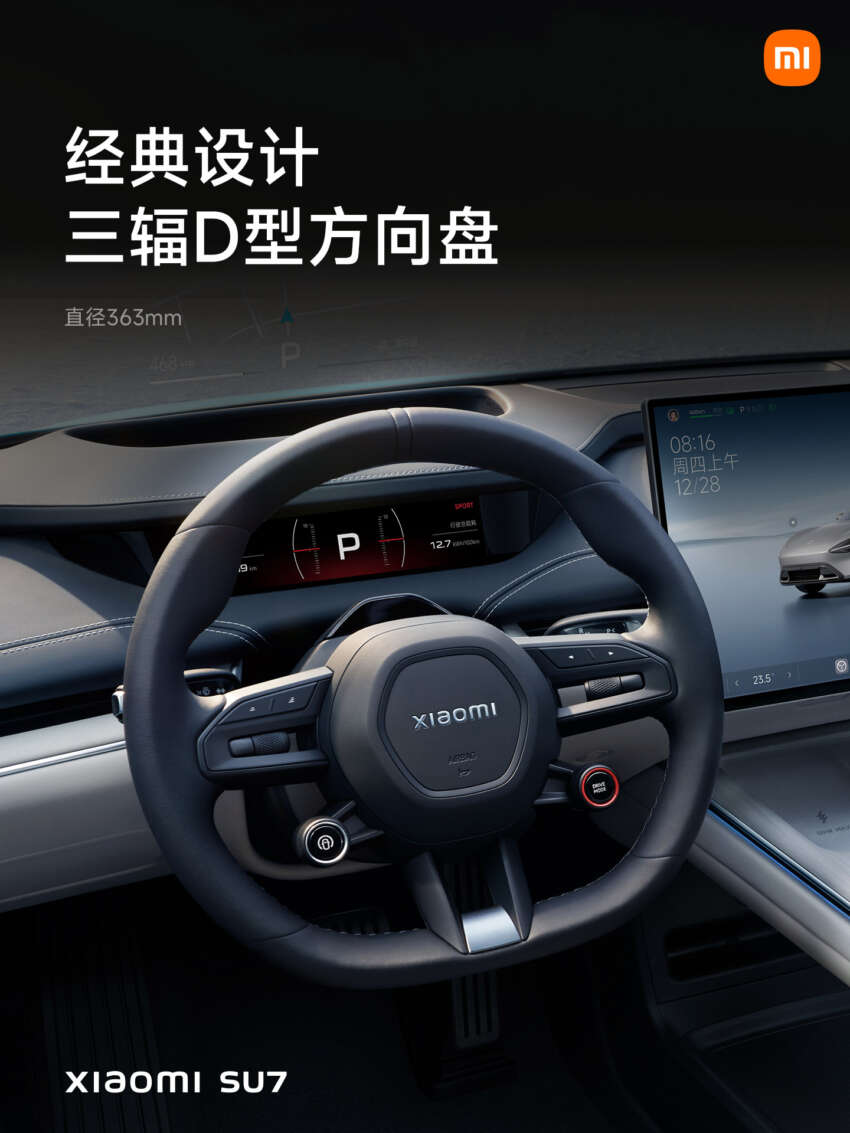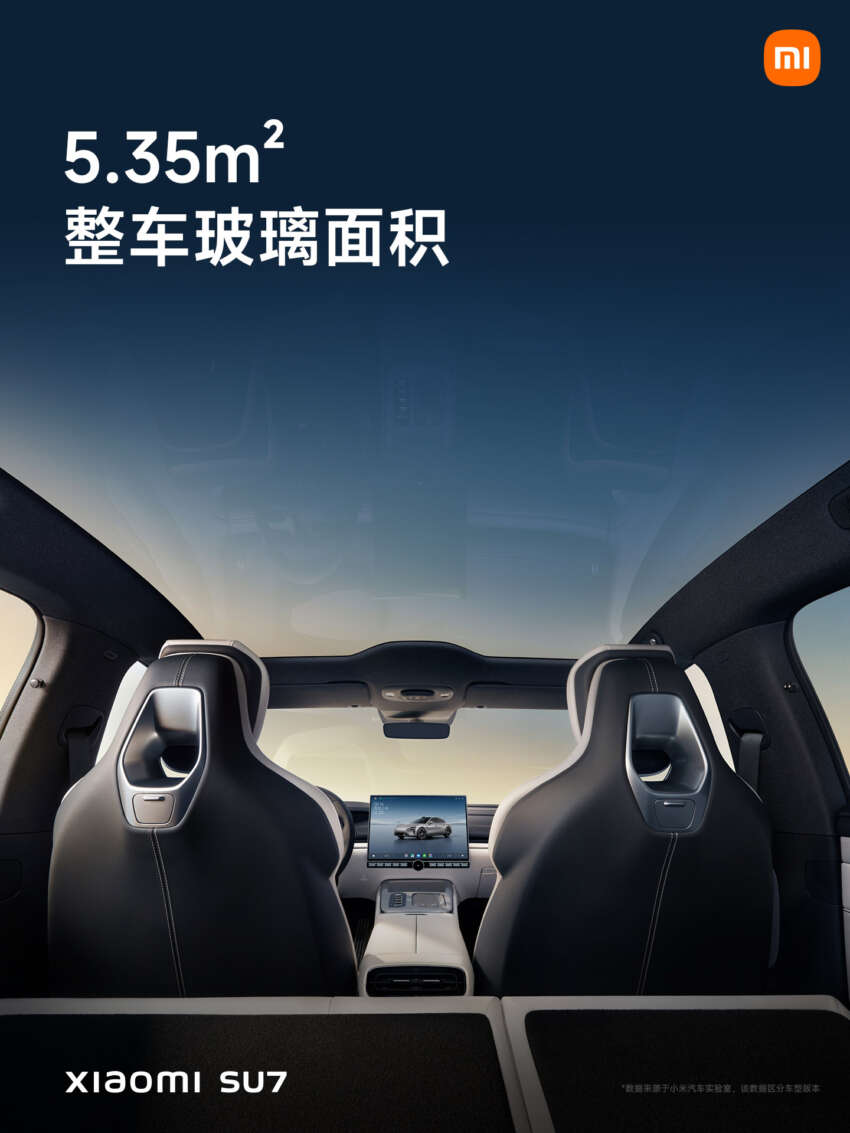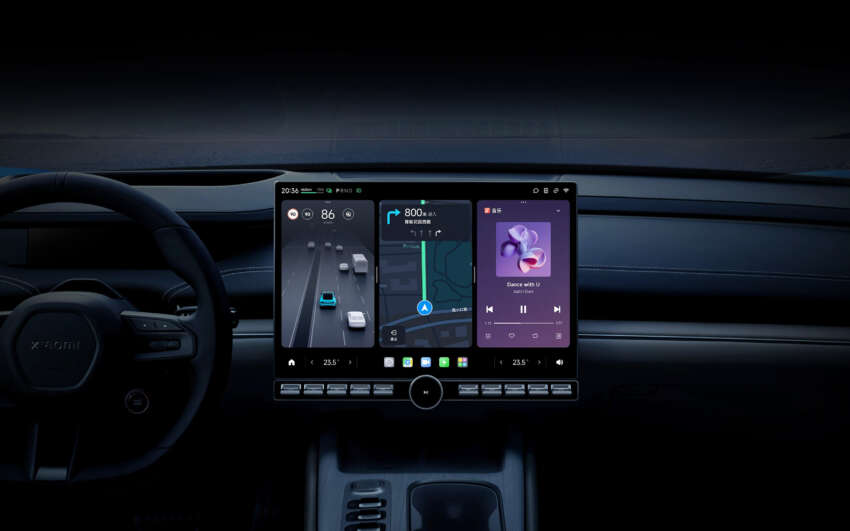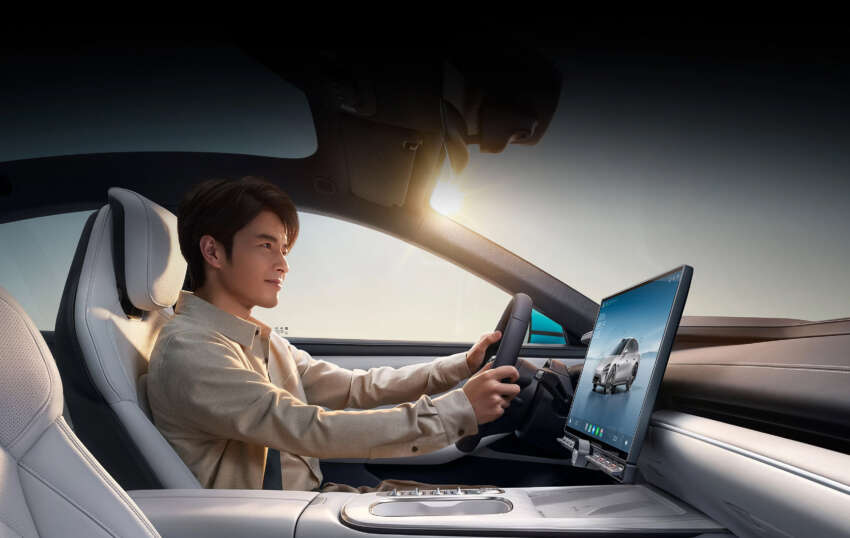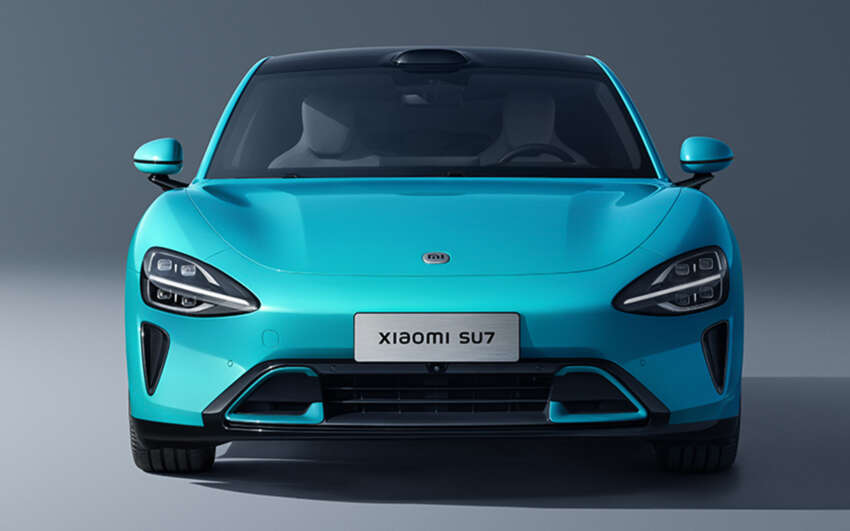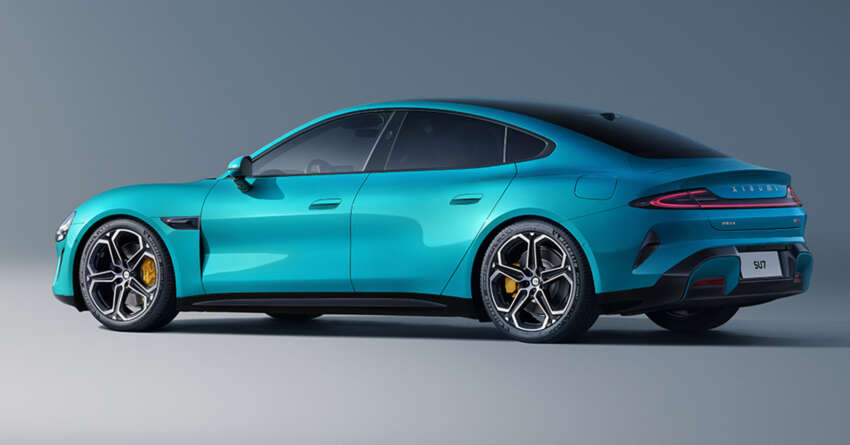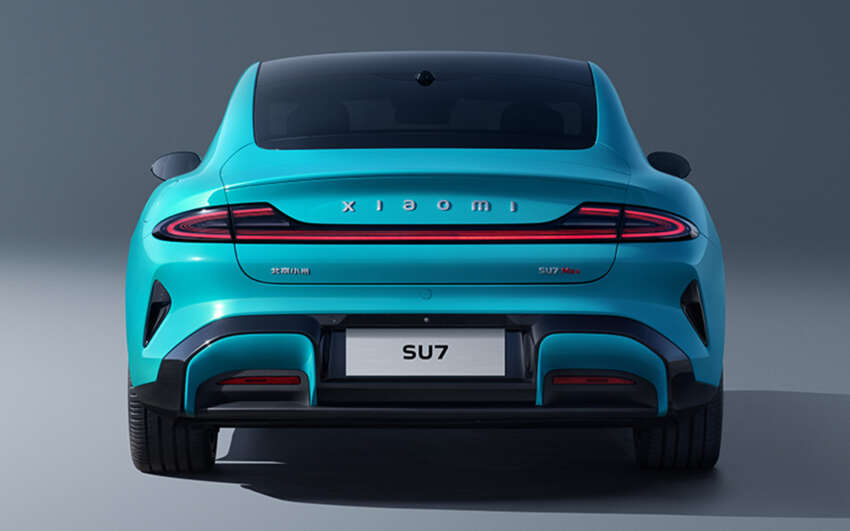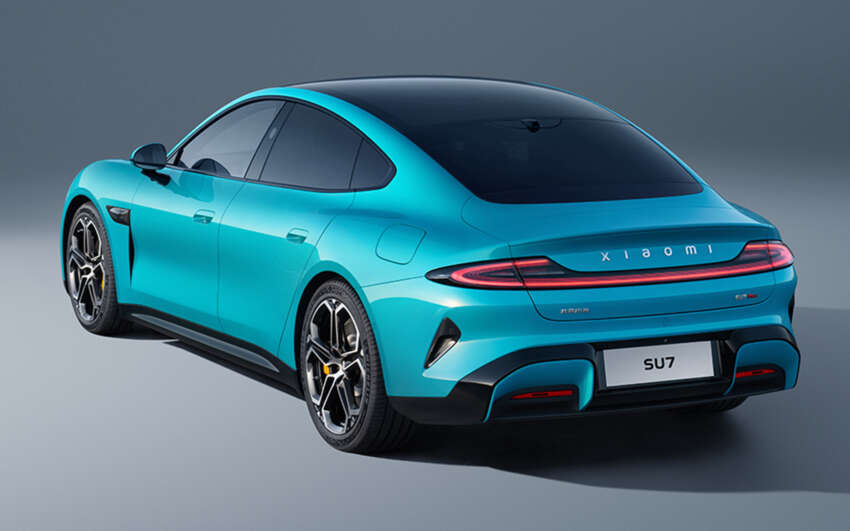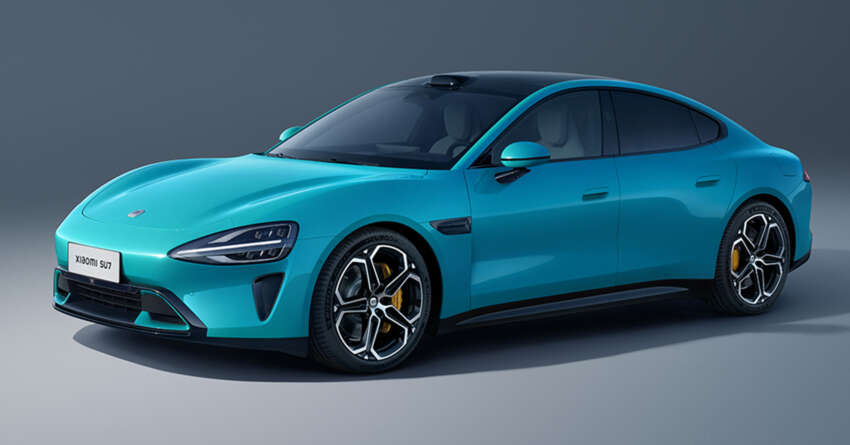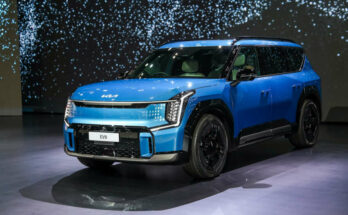After a series of spy shots & renderings surfacing the internet, Xiaomi has officially unveiled its first electric vehicle (EV), the SU7 sedan in China. The Xiaomi SU7 will be produced by BAIC in a Beijing factory with an annual capacity of 200,000 units.
According to Xiaomi CEO Lei Jun, the SU7 is a statement of intent as the company aims to become one of the world’s top five automakers in the next 15 to 20 years. Keep in mind Huawei has also launched its car earlier this year whereas another phone maker Meizu is in the process of launching its own car next year.
Related: Huawei’s Luxeed S7 Sedan Launched in China
The Xiaomi SU7 rides on the company’s Modena platform and measures 4,997 mm in length, 1,963 mm in width, 1,440 mm in height, and has a 3,000 mm wheelbase. That puts its dimensions somewhere between that of a Porsche Taycan and a Tesla Model S.
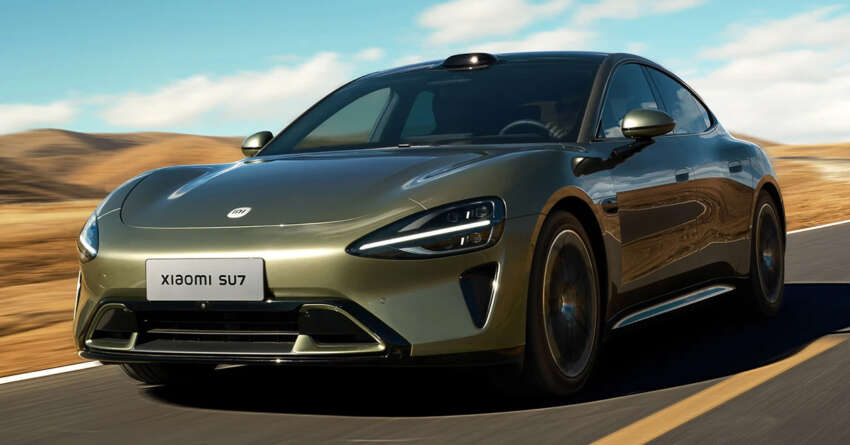
Former BMW chief designer Chris Bangle acted as the SU7’s design consultant. The sedan’s distinguishing features include triangular-shaped headlamps and wide-width taillights with a sideways C-shaped signature. Additionally, the body has several channels, inlets, and outlets as well as a noticeable diffuser feature to aid in aerodynamics; the company claims a drag coefficient of 0.195.
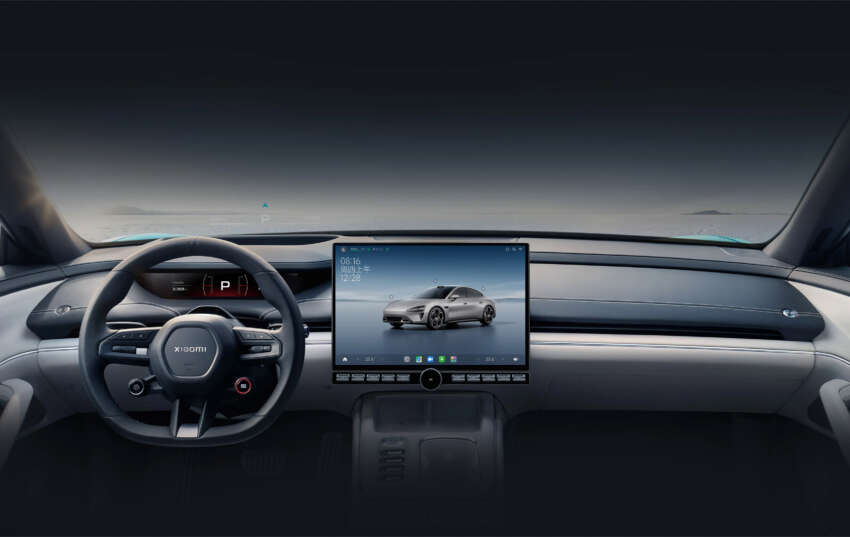
The interior has a straightforward dashboard design with a 16.1-inch 3K touchscreen in the middle. Xiaomi opted to retain certain physical controls for various vehicle functions, as seen on the center console and steering wheel. The infotainment system is powered by a Qualcomm Snapdragon 8295 system-on-chip (SoC). Xiaomi’s HyperOS is the software that drives the infotainment system, which surprisingly supports Apple CarPlay and AirPlay.
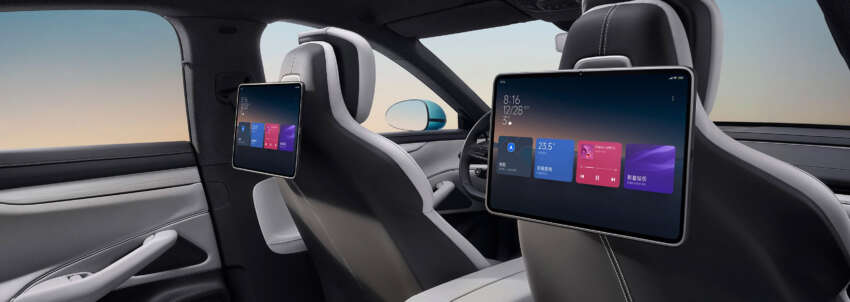
Additionally, there are dedicated mounting points behind the front seat headrests to mount an iPad, which can be used to control various vehicle functions such as air-conditioning, seats, and media playback. Xiaomi refers to this integration as CarloT, which is a hardware ecology that is fully open to third parties. Those pinned mounting points for iPads can also be found in other areas of the cabin, allowing owners to add additional hardware such as another row of physical controls below the touchscreen or even Mijia products.
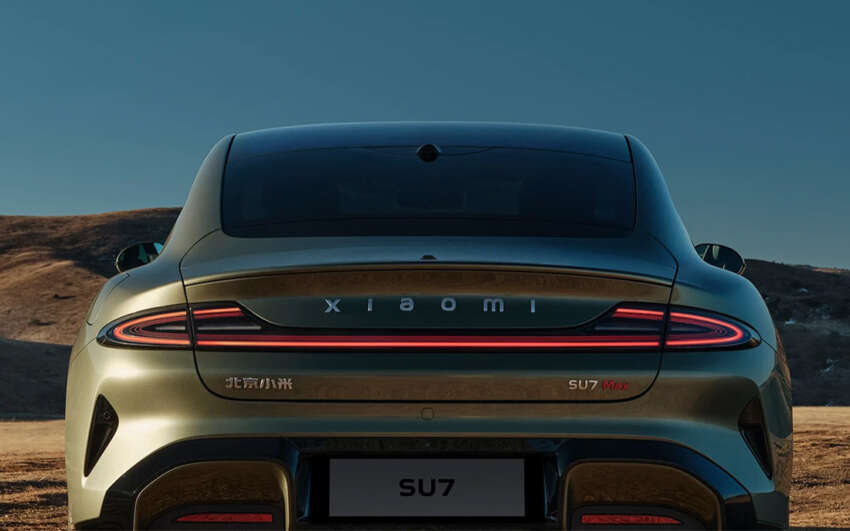
In terms of powertrain, the SU7 is built on an 800-volt electrical architecture, with Xiaomi claiming a maximum voltage of 871 volts. There are three versions of electric motors developed by the company. Two of them spin at speeds of up to 21,000 rpm and are part of the ‘HyperEngine V6 Series’, with the first being the V6 that operates at 400 volts and is rated at 299 PS (295 hp or 220 kW) and 400 Nm. The second is the V6 motor that operates at 800 volts and provides 374 PS (369 hp or 275 kW) and 500 Nm.
Related: Jiyue 07 from Geely and Baidu Unveiled
The third motor is referred to as the HyperEngine V8s, and it spins at up to 27,200 rpm and provides up to 578 PS (570 hp or 425 kW) and 635 Nm – this will be in a production car by 2025. Another more powerful HyperEngine motor capable of spinning at up to 35,000 rpm is also being developed.
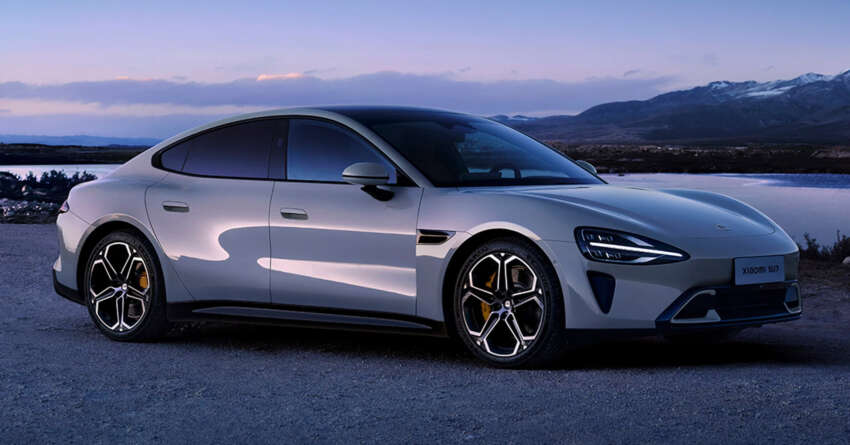
The Xiaomi SU7 employs CATL batteries that are mounted in cell-to-body construction, with a total energy capacity of 101 kWh. This equates to a CLTC-rated cruising range of 800 km, with fast charging capable of recovering 220 km in just five minutes, or 510 km in only 15 minutes. Two variants are announced at this stage. The base SU7 is rear-wheel drive with the HyperEngine V6 motor and has a 0-100 km/h time of 5.28 seconds, a top speed of 210 km/h, a 0-100 km/h braking distance of 35.5 meters, a 73.6 kWh battery, and 668 km of driving range.
Related: Geely’s Zeekr 007 Sedan Launched in China
The SU7 Max variant is powered by two electric motors, giving the system a total output of 673 PS (664 hp or 495 kW) and 838 Nm of torque. This all-wheel drive system also has a boost mode (20 seconds), and the company claims that the SU7 will accelerate from 0 to 100 km/h in 2.78 seconds on its way to a top speed of 265 km/h. According to Xiaomi, the SU7 Max exceeds the Taycan Turbo and Model S in terms of 0-100 km/h timings and max speed. The SU7 also takes 33.3 meters to come to a complete stop from 100 km/h, which is 0.7 meters shorter than the Taycan Turbo.
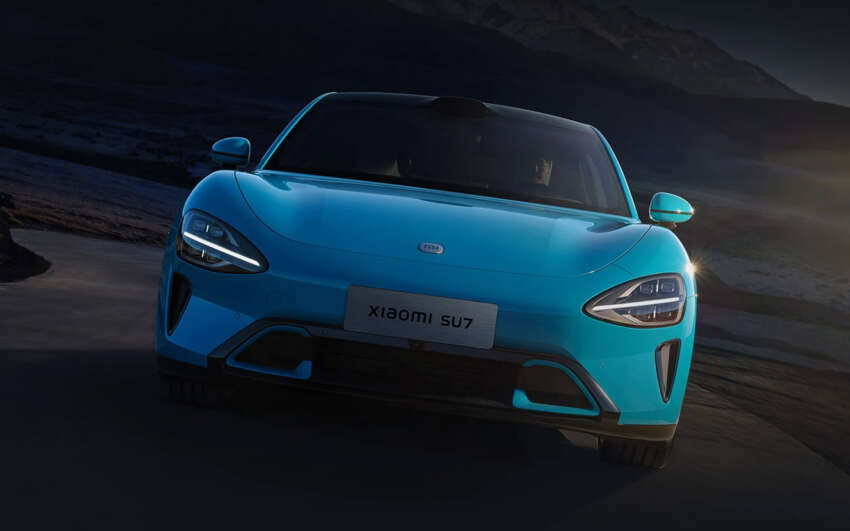
Air suspension with adaptive dampers, an active shutter grille with 16 degrees of adjustment, and an active rear wing with four adjustment levels are among the other driving-related features. On the safety and driving assistance front, the SU7 will include the Xiaomi Pilot with 16 functions as standard – two Nvidia Drive Orin SOCs give 508 TOPS of processing power. The EV has also passed 40 crash tests, and its key components are comprised of 90.1% high-strength steel and aluminum alloy (2,000 MPa) for a torsional stiffness of 51,000 Nm/degree.
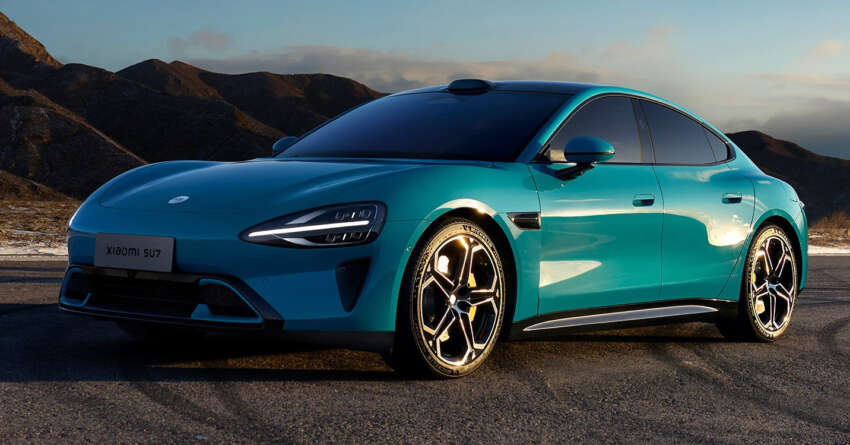
The SU7 is available in three external colors (Aqua Blue, Mineral Gray, and Verdant Green), with the interior available in grey, red, or black. There is also a special edition Xiaomi 14 that matches the car’s color scheme for customers who want their Xiaomi EV and smartphone to be “a perfect match.”
Related: Chery’s Exeed Sterra ES Launched in China
The company hasn’t revealed the prices yet but is expected to announce them closer to the formal launch. The Xiaomi SU7 is scheduled to go on sale in China early next year.

A computer animation professional with over 23 years of industry experience having served in leading organizations, TV channels & production facilities in Pakistan. An avid car enthusiast and petrolhead with an affection to deliver quality content to help shape opinions. Formerly written for PakWheels as well as major publications including Dawn. Founder of CarSpiritPK.com

